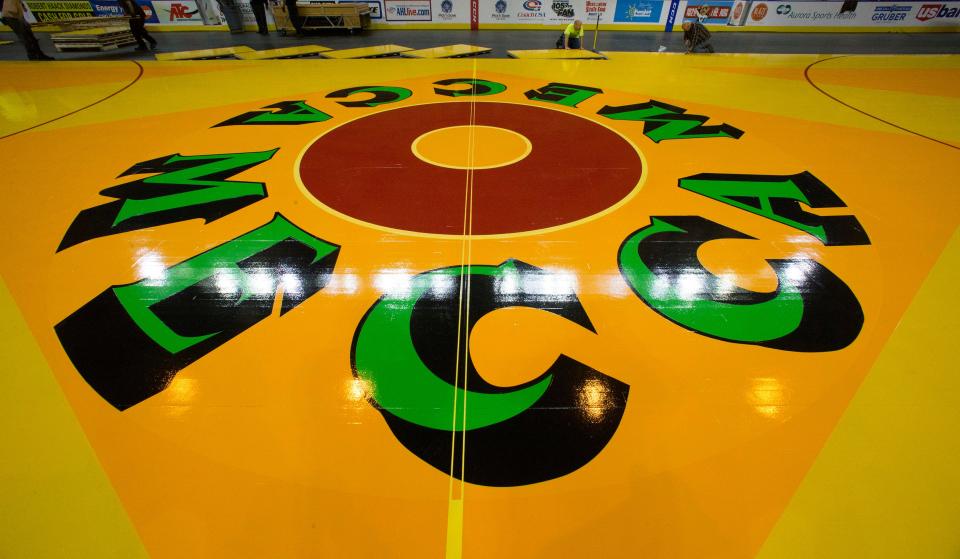How the MECCA floor made Milwaukee famous
It’s the floor that made Milwaukee famous.
Designed for $27,500 by New York pop artist Robert Indiana — a man with the perfect name to match the flamboyance of the masterpiece — the MECCA floor was a controversial addition in 1977. The Milwaukee Exposition and Convention Center (known today as the UW-Milwaukee Panther Arena, but then abbreviated as the MECCA) served as home to the Milwaukee Bucks and Marquette men’s basketball team. Marquette basketball, known for its eclectic uniforms and the fiery personality of recently retired head coach Al McGuire, was the perfect match for the look.
The floor featured two giant Ms consuming either half of the court, somewhat hidden in the two-toned yellow paint scheme, a red bull’s eye at center court and blue lettering for “MECCA” wrapped twice around the center circle. Dark red for the lanes, dark blue for the sideline and dark green for the perimeter.
The gaudy floor didn’t quite fit everyone’s aesthetic tastes immediately (including new MU head coach Hank Raymonds), but it was a hit with plenty of fans (and Bucks coach Don Nelson). It became part of the Milwaukee color palette until the Bucks moved into the Bradley Center in 1988. The Bucks re-created the floor for a “Return to the MECCA” game in 2017, a return to the building that harbored the 1971 NBA champion and 1977 NCAA champion.

Indiana rose to fame because of his “LOVE” sculpture, but the MECCA floor remains a distinctly Milwaukee concept.
See the rest of Milwaukee's 100 objects
This article originally appeared on Milwaukee Journal Sentinel: How the MECCA floor made Milwaukee famous

